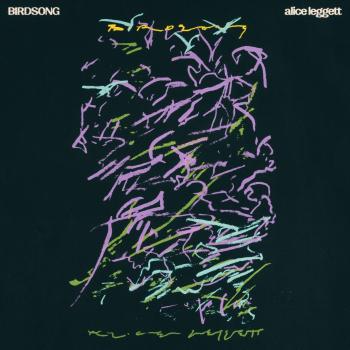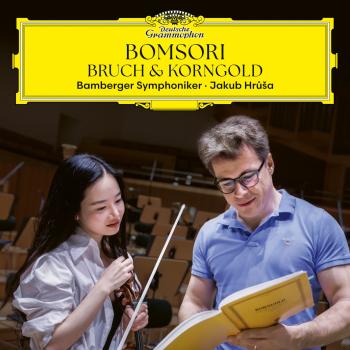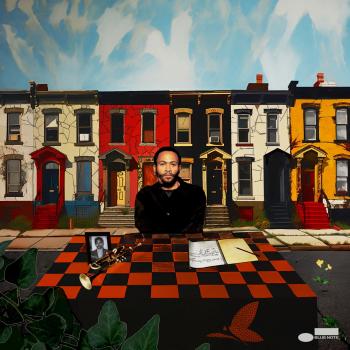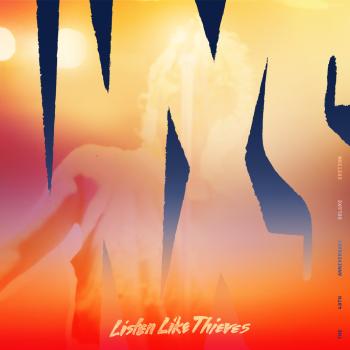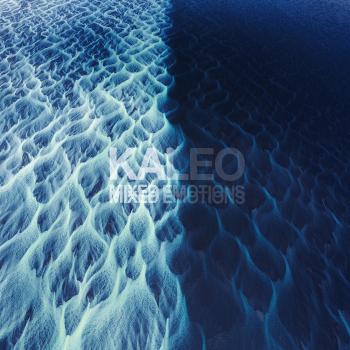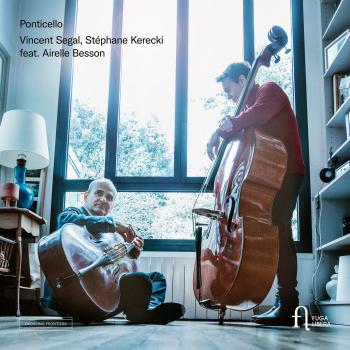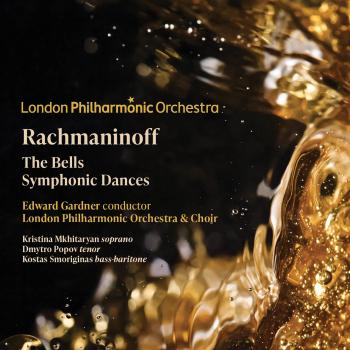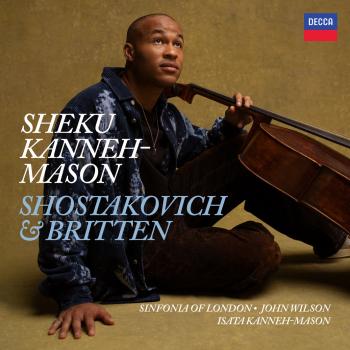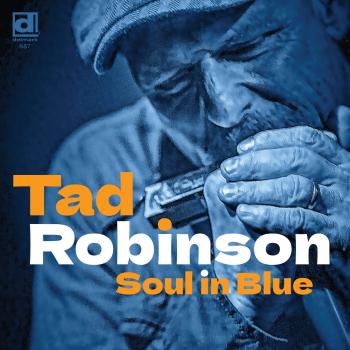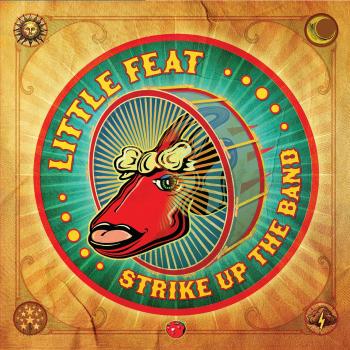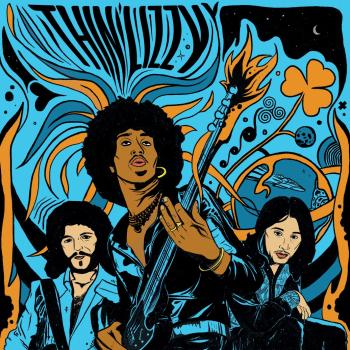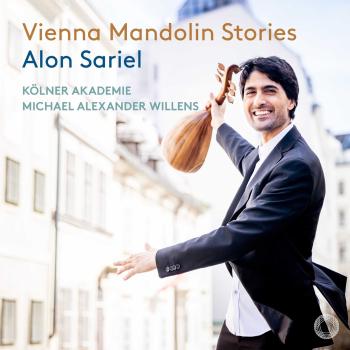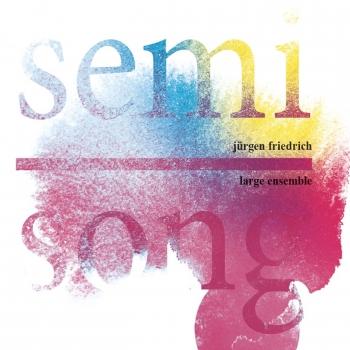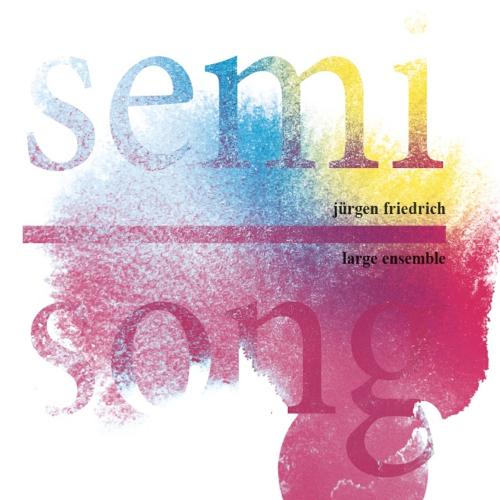
Album Info
Album Veröffentlichung:
2022
HRA-Veröffentlichung:
20.05.2022
Label: nwog records
Genre: Jazz
Subgenre: Crossover Jazz
Interpret: Jürgen Friedrich & Jürgen Friedrich Large Ensemble
Komponist: Jürgen Friedrich
Das Album enthält Albumcover
- 1 Infrablue 09:41
- 2 Morpheus 09:31
- 3 Armageddon 07:28
- 4 Blauen 08:21
- 5 Unleash 13:10
- 6 Weave 07:26
- 7 Ritus 12:54
- 8 Loop 02:24
Info zu Semi Song
Some musical works open themselves up immediately. You listen once and know what you have. And then there are those that arouse your curiosity, want to be heard again and again until they reveal more and more of themselves from the depth of their own center, in order to manifest their overwhelming complexity in the end. Jürgen Friedrich’s large-scale programSemi Song, recorded by his Large Ensemble, belongs to the latter.
Semi Song is an intoxicating piece of music whose parts merge together into a complete work of art. It bursts the corset of a normal album – whether on CD, vinyl or via streaming. Indeed, this album hints at this quality after just a few bars. But let’s forget for a moment how the sound comes to us, which is just a medium. It doesn’t take much imagination to visualize the immense amount of work that goes into this opus. Jürgen Friedrich himself draws the comparison to a film, whose credits show endless rows of names contributing to such a work of art. In the case of Semi Song, however, the list would be quite short, because apart from the performing musicians and the sound engineer Christian Heck, who was actively involved in the musical result, the entire work on this mammoth project was entirely in Friedrich’s hands. And yet the comparison with film is only partially accurate because Semi Song is more akin to one of those epic TV series of the present whose narrative depth of field often goes far beyond the format of a singular film. In each piece on the album, Jürgen Friedrich describes a self- contained story that is, nevertheless, directly related to all the other pieces on the program.
The plot and dramaturgy of all these pieces are absolutely unpredictable. When a composition begins, the music does not tell us where the journey is going. Different components – of colorfulness, density, dynamics and melodicism – seek new paths in each piece. At the end of each track, the music aspires to find a balance between all its creative elements, just as a circle is closed at the end of the entire suite. After a good 73 minutes, Semi Song ends at the exact moment when everything that needed to be said has been said. The mystery of surprise is exploited to such an extent that it takes hold again and again, even when the repeated enjoyment of the music has long since crossed the border from the new to the familiar. In this respect, Jürgen Friedrich thinks symphonically because the more often one gets involved with the music, the more fascinating its almost limitless variety of forms becomes. Strictly speaking, Semi Song is a musical palimpsest in which new layers of perception keep unfolding.
The Jürgen Friedrich Large Ensemble is an orchestra of soloists. Although the language of the composer – who does not take to the keys himself here, but leaves the piano to Pablo Held – is absolutely anchored in the here and now, he nevertheless follows the virtues of iconic large jazz ensembles such as the Globe Unity Orchestra or the Jazz Composers Orchestra. Unlike many comparable ensembles today, Friedrich gives the soloists involved the greatest possible leeway. If we want to stay with the image of a filmmaker, Friedrich provides script, scenery and costumes, but leaves it to the actors to fill the plot with life according to their liking within the given framework. In other words, the respective soloist is situationally the bandleader.
The line-up reads like a Who’s Who of German Jazz, ranging from Pablo Held to Uli Kempendorff, Steffen Schorn to Bastian Stein, Nils Wogram to Sebastian Gille, from Shannon Barnett via John-Dennis Renken all the way to Fabian Arends, to name but a few. The composer wants to take such an array of independent creativity to the limit with the greatest possible efficiency. “The solos should be able to go somewhere else even in the context of the Large Ensemble if they want to go somewhere else,” postulates sound director Friedrich. “The players should not think they have the task of implementing a certain function within the musical dramaturgy. That would already be too much of a guideline for me. In this large ensemble all participants should feel as if they were on stage with their own quartet.”
This tension between subtle ensemble arcs and expressive solo performances lends each individual moment tremendous vehemence. At certain points, Friedrich deliberately relies on a vacuum, which he describes as a lack of leadership, to draw his fellow players out of their shells. Of course, this only works when the leader and the players have built up great mutual trust. Jürgen Friedrich does not think in terms of instruments or basic timbres, but only in terms of people and characters. What contribution can the respective musician make, what constellations and contrasts result from the personalities of his crew? “If I sense that a person might like to play a solo in a certain environment, then I ask them. That happens completely regardless of whether it’s a trumpet, a trombone or the double bass. It’s all about the personalities. The instrument colors almost don’t matter.”
Jürgen Friedrich's Large Ensemble is not a big band, but rather an orchestra. There are neither the typical brass salvos, nor an omnipresent rhythm carpet. Friedrich exploits the complete spectrum of an orchestra and also allows himself the time necessary to do so. In times of crisis, Semi Song is a stroke of luck, because the work reminds us that art – no matter how much it may have eavesdropped on life – can also be a triumphant luxury. A luxury that makes no claim to exclusivity, but simply reveals itself for what it is: a great, extensive and celebratory festival of the senses.
Johannes Ludwig, alto sax, soprano sax, clarinet, flute, alto flute, piccolo
Leo Huhn, alto sax, clarinet, electronics
Sebastian Gille, tenor sax, soprano sax, clarinet, flute
Uli Kempendorff, tenor sax, clarinet
Steffen Schorn, baritone sax, bass clarinet, c melody sax, bass flute, contra alto clarinet, tubax
Chris Mehler, trumpet, flugelhorn
Bastian Stein, trumpet, flugelhorn
John-Dennis Renken, trumpet, flugelhorn, electronics
Matthias Bergmann, trumpet, flugelhorn
Nils Wogram, trombone
Shannon Barnett, trombone
Moritz Wesp, trombone
Jan Schreiner, bass trombone, tuba
Pablo Held, piano
David Helm, bass
Fabian Arends, drums
Jürgen Friedrich
geboren 1970 und in Niedersachsen aufgewachsen, arbeitet als Komponist und musikalischer Leiter mit zahlreichen Klangkörpern. Er studierte Klavier und Komposition an der Hochschule für Musik Köln. Mit Kenny Wheeler als Gast nahm er seine erste Platte auf. Sein Klaviertrio mit John Hébert und Tony Moreno spielt seit über 15 Jahren auf beiden Seiten des Atlantiks und veröffentlichte bislang fünf CDs, darunter Seismo von 2006 und Pollock von 2009 (beide Pirouet). Jürgen Friedrichs Projekt Bits & Pieces vereint interaktive Elektronik und akustische Instrumente zu komponierter und improvisierter Musik. Im Cologne Contemporary Jazz Orchestra CCJO führt er als Pianist oder Leiter seit mehreren Jahren monatlich neue Programme im Kölner Stadtgarten auf. Jürgen Friedrich ist Professor an der Hoch- schule für Musik Mannheim und betreut den Masterstudien- gang für fortgeschrittene Komponisten und Arrangement.
Er spielte u.a. mit David Liebman, Kenny Wheeler und Nils Wogram. Als Komponist, Arrangeur, Leiter arbeitete er u. a. mit: Sunday Night Orchestra, Maria Schneider Jazz Orchest- ra, NDR Bigband, HR Bigband, Bujazzo, Philharmonisches Orchester Würzburg und Gästen wie Michael Brecker und Lee Konitz. Konzerte führten ihn durch Europa, Brasilien, USA und auf viele Festivals wie Moers, Trytone Amsterdam, Copenhagen, Enjoy Jazz Mannheim, Musiktriennale Köln und Prag Piano Festival. Für seine Kompositionen und Projekte erhielt der in Köln lebende Musiker mehrere nationale und internationale Preise: als erster Europäer überhaupt 1997 den Gil Evans Award for Jazz Composition, 1998 und 2002 den Julius Hemphill Composition Award, 2000 den Förder- preis Jazz/Improvisierte Musik der Stadt Köln, sowie 2001 und 2005 den Jazzpreis Niedersachsen.
Achim Kaufmann
geboren 1962 in Aachen, lebt nach Stationen in Köln und Amsterdam heute in Berlin. Als einer der wichtigsten europäischen Pianisten ist er viel-seitig aktiv in der Schnittmenge Jazz-Freie Improvisation- Neue Musik. Sein lyrisches Spiel bereichert er durch behutsames Präparieren des Klaviers und bisweilen auch durch elektronische Verfremdung. Seit den 80er Jahren auf der Szene präsent, hat der SWR-Jazzpreisträger von 2001 durch eigene Duo-, Trio- und Quartett- Projekte und im Zusammen- spiel mit Musikern wie Tobias Delius, John Hollenbeck, Peggy Lee, Simon Nabatov, Jochen Rueckert, John Schröder, Henning Sieverts, Chris Speed, Tomász Stanko und Steve Swallow international viel Anerkennung gefunden. Mit seinen Bandprojekten gemeinsam mit dem Klarinettisten und Altsaxophonisten Michael Moore – im Duo Kaufmann/ Moore, im Trio Kamosc (Achim Kaufmann, Michael Moore, Dylan van der Schyff) und im Gueuledeloup Quartet (Achim Kaufmann, Michael Moore, John Hollenbeck, Henning Sieverts) – sowie im Trio Kaufmann/Gratkowski/de Joode ist er regelmäßig auf Tournee und wurde zu renommierten Festivals eingeladen. Mit Valdi Kolli und Jim Black veröffentlichte der „tonal wohl kühnste deutschen Jazzpianist“ (Frank- furter Allgemeine Zeitung) mit Kyrill (2008) und Verivyr (2011) bislang zwei CDs bei Pirouet.
John Hébert
ursprünglich aus Lousiana, lebt heute in New York. Der gefragte Bassist , der vom Down Beat zum „Rising Star Acoustic Bassist“ gekürt wurde, arbeitet(e) mit Musikern wie John Abercrombie, Paul Bley, Uri Caine, Marc Copland, Jürgen Friedrich, Mary Halvorson, Fred Hersch, Ingrid Laubrock, Lee Konitz, Paul Motian, Greg Osby, Maria Schneider, Bill Stewart und Kenny Wheeler. Gemeinsam mit Tony Moreno bildet John Hébert seit über fünfzehn Jahren und fünf Veröffentlichungen im Klaviertrio von Jürgen Friedrich die Rhythmusgruppe.
Hayden Chisholm
1975 bei Auckland geboren und in New Plymouth aufgewachsen, lebt heute in Köln und Barcelona. Er besuchte und studierte Kulturen in aller Welt, hat das mikrotonale Spiel auf dem Saxophon perfektioniert und wurde in den neunziger Jahren insbesondere durch seine Zusammenarbeit mit Nils Wograms Root 70 bekannt. 1996 veröffentlichte er sein Debütalbum Circe. Er spielt zudem mit der Aktionskünstlerin Rebecca Horn und dem Computer- musiker Marcus Schmickler, kuratiert ein eigenes Festival im Kölner Loft und gründete ein Musiklabel. Außerdem wirkte er als Saxophonist, Klarinettist und Keyboarder an Alben von Burnt Friedman, Jaki Liebezeit, David Sylvian und Sebastian Gramss’ Underkarl mit.
John Hollenbeck
lebt in New York und Berlin. Aus reichen Erfahrungen mit Jazz, Weltmusik und Zeitgenössischer Komposition entwickelt er eine eigene musikalische Sprache die zugleich kunstvoll und direkt verständlich ist. Seine bemer- kenswerte Karriere umfasst nicht nur verschiedenste Projek- te als Schlagzeuger, sondern auch als Komponist und eine Lehrtätigkeit für Schlagzeug und Improvisation in Berlin. Zusammenarbeit u.a. mit Village Vanguard Orchestra, Bob Brookmeyer, Meredith Monk, Cuong Vu und Pablo Ziegler. Zahlreiche Auszeichnungen, Preise und Stipendien, u.a. Guggenheim Fellowship. Zu seinen eigenen Projekten gehö- ren das Claudia Quintet mit Chris Speed, Matt Moran, Ted Reichman und Drew Gress, das John Hollenbeck’s Large Ensemble sowie ein experimentelle Duo mit dem Sänger Theo Bleckmann.
Dieses Album enthält kein Booklet

